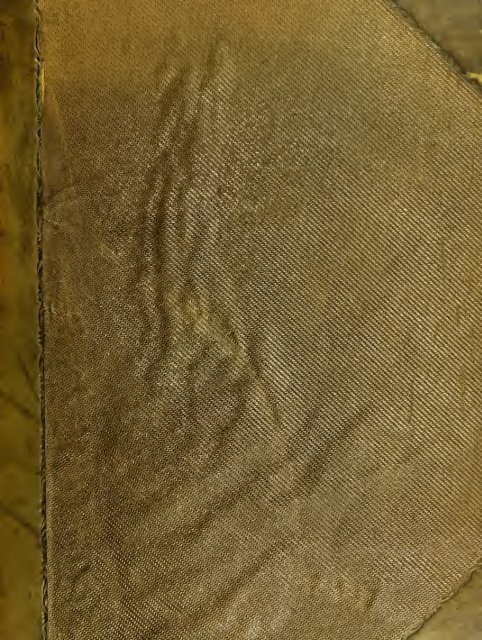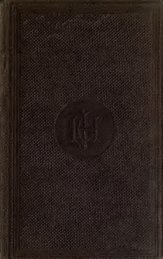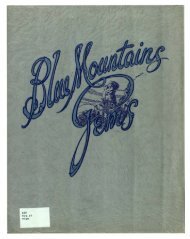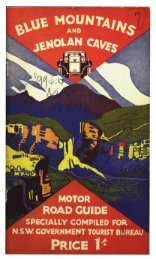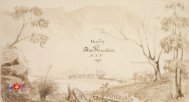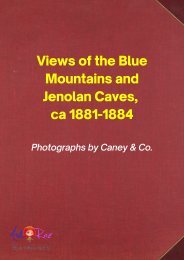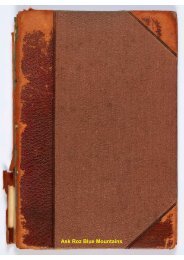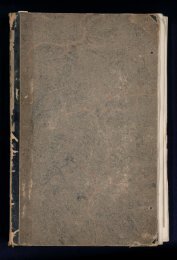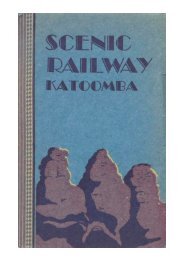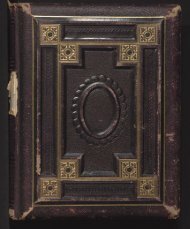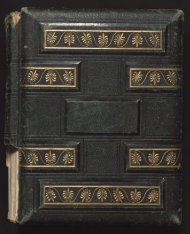A Natural History of Lepidopterous of NSW by John William Lewin
A Natural History of Lepidopterous of NSW by John William Lewin COLLECTED, ENGRAVED, AND FAITHFULLY PAINTED AFTER NATURE JOHN WILLIAM LEWIN, A.L.S. LATE OF PARAMATTA, NEW SOUTH WALES
A Natural History of Lepidopterous of NSW by John William Lewin
COLLECTED, ENGRAVED, AND FAITHFULLY PAINTED AFTER NATURE
JOHN WILLIAM LEWIN, A.L.S. LATE OF PARAMATTA, NEW SOUTH WALES
Create successful ePaper yourself
Turn your PDF publications into a flip-book with our unique Google optimized e-Paper software.
'%p ':WM^f~<br />
Hisses'!
WILLIAM WESLEY & Son,<br />
38ooltssrflctss & 5PuWisl]tt3,<br />
28, Essex Street, Strand,
Cn — (a*^ ^£*o ^f" p^tC •<br />
i\ ?^tC Qg; UoT t/j^ ,^> u^<br />
£-j 4. ~fc^ ifeoi eAsC^'»v,<br />
1^7<br />
^'(c^ci), f„<br />
4 •<br />
"fiT. ^v>
NATURAL<br />
HISTORY<br />
LEPIDOPTEROUS INSECTS<br />
NEW SOUTH WALES.<br />
COLLECTED, ENGRAVED, AND FAITHFULLY PAINTED AFTER NATURE,<br />
JOHN<br />
WILLIAM LEWIN, A.L.S.<br />
LATE OF PARAMATTA. JbLELW sniiwn if ittt<br />
[\fftT LwJZA. ^ 'Bin. CVU. sA ^C, dtiYy.-^ -.<br />
'iA~-i^~
NATURAL<br />
HISTORY<br />
OF<br />
THE<br />
LEPIDOPTEROUS INSECTS<br />
OF<br />
NEW SOUTH WALES.<br />
COLLECTED, ENGRAVED, AND FAITHFULLY PAINTED AFTER NATURE,<br />
JOHN<br />
WILLIAM LEWIN, A.L.S.<br />
LATE OF PARAMATTA,<br />
NEW S&UTtt WALES:'<br />
ILLUSTRATED WITH NINETEEN PLATES.<br />
LONDON<br />
PRINTED FOR J. H. BOHTE, FOREIGN BOOKSELLER TO HIS MAJESTY,<br />
4, YORK-STREET, COVENT-GARD UN .<br />
1822.
Eto \
TO<br />
THE RIGHT HON. LADY ARDEN.<br />
Madam,<br />
In grateful remembrance <strong>of</strong> that goodness<br />
which gave the Author an opportunity <strong>of</strong> employing his talents,<br />
as it were, in a new world, permit me to address this small<br />
Volume to your Ladyship, as the first<br />
fruit <strong>of</strong> much labour,<br />
assured, that if any degree <strong>of</strong> merit be discernible in this performance,<br />
it will be sufficient to ensure it a favourable reception<br />
from your Ladyship, as has already been experienced <strong>by</strong><br />
him, who must ever remain,<br />
Your Ladyship's<br />
Most grateful humble servant,<br />
J. W. LEWIN.
PREFACE.<br />
The contents <strong>of</strong> this little Volume are <strong>Lepidopterous</strong> Insects, indigenous <strong>of</strong><br />
New South Wales, were there collected, painted, and engraved, <strong>by</strong> the Author;<br />
and sent to London <strong>by</strong> him for publication, to furnish him with the means <strong>of</strong><br />
returning to England, his native country, after an absence <strong>of</strong> near eight<br />
years, which he has spent almost solely in the pursuit <strong>of</strong> natural history,<br />
principally in the branches, Ornithology and Entomology; in which he has<br />
in New South Wales, and in Otaheite, made some hundred <strong>of</strong> original paintings;<br />
from which it is hoped he may, <strong>by</strong> the pr<strong>of</strong>its <strong>of</strong> this little first effort,<br />
be enabled to return and reap an honourable benefit, as their publication,<br />
under his ingenious hand,<br />
we flatter ourselves, would somewhat redound to<br />
the honour, reputation, and increase <strong>of</strong> those branches <strong>of</strong> the sciences in<br />
Britain.<br />
The insects here figured are new, and some <strong>of</strong> them extraordinary<br />
in their natural history,<br />
the singularity <strong>of</strong> which, with the correctness <strong>of</strong> the<br />
figures, must render this Work, we conceive, peculiarly valuable. For till<br />
this author, none has discovered, or expected to find lepidopterous insects<br />
<strong>of</strong> the families here figured, as the destroyers <strong>of</strong> timber, or the depredators<br />
<strong>of</strong> massy and hardest trees, in the way which is here made known.<br />
And it should be observed also, that the natural history, as well as the<br />
engraving, was done on the spot, and not from dry specimens, or notes still<br />
more abstruse. And all that was left for us to do was merely to define the<br />
genus, and name the individual in some cases, which we have done sometimes<br />
from the plant on which the insect was found;<br />
and for the names <strong>of</strong> those<br />
plants we make our acknowledgments to the learned President <strong>of</strong> the Lin-
VI<br />
nean Society, Dr. Smith, and also acknowledge the kind observations <strong>of</strong> the<br />
Secretary <strong>of</strong> the Society, Alexander Mac Leay, Esq. for whose abilities,<br />
as<br />
an Entomologist, we have the highest respect, though we cannot avoid<br />
differing greatly from him in some points.<br />
Of the style <strong>of</strong> the publication, and the arrangement <strong>of</strong> the subject, we<br />
can only say, being well instructed in the Field <strong>of</strong> Nature, we have endeavoured<br />
to render the book useful.<br />
THOMAS LEWIN.
TABLE OF CONTENTS.<br />
Plate I.— Phalcenoides Glycines Page 2<br />
II.— Sphinx Ardenia „ 3<br />
///. Sphinx Oldenlandiee 4<br />
IV.— Bom<strong>by</strong>x Vulnerans 5<br />
V.— Bom<strong>by</strong>x Nasuta 6<br />
VI.— Bom<strong>by</strong>x <strong>Lewin</strong>ce 7<br />
VII.— Bom<strong>by</strong>x Exposita 8<br />
VIII.— Bom<strong>by</strong>x Tristis , - 9<br />
IX.— Bom<strong>by</strong>x Banksice t 10<br />
X.— Cryptophasa Irrorata 11<br />
XI.— Cryptophasa Albacosta 12<br />
XII.— Cryptophasa Rubescens 13<br />
XIII.— Cryptophasa Pultence =<br />
- 14<br />
XIV.—Cryptophasa Strigata 15<br />
XV.— Lithosa Replana 16<br />
X VI.—Hepialns Ligniveren 17<br />
XVII.—Tortrix Australana - 18<br />
XVIII.— Tinea Cossuna 19
NATURAL<br />
HISTORY<br />
OF THE<br />
LEPIDOPTEROUS INSECTS,<br />
SfC, Sfc, Sfc.
Ord. LEPIDOPTERA. Gen. PAPILIO o/Linn.<br />
Family<br />
PHAL^NOIDES.<br />
CHARACTER OF THE FAMILY.<br />
PALPIflattened and hairy, round at the ends, and advanced straight before the eyes.<br />
TONGUE spiral, and generally long.<br />
ANTENNM bent, with, an oblong club terminating in a point, and frequently hooked.<br />
They fly <strong>by</strong> day, and are properly a link between the Moth and Butterfly.<br />
Phalcenoides Glycinas. PI. 1.<br />
SPECIFIC DESCRIPTION.<br />
Phalcenoides with black wings ; on the anterior two bars <strong>of</strong> straw yellow, and several markings<br />
<strong>of</strong> the same colour on the anterior edge tinged with green : on the posterior wings a margin<br />
<strong>of</strong> the same yellow, waving into the black, and in the male a round spot <strong>of</strong> the same in the<br />
middle. Anus orange, and tufted in the male. The thorax marked with several pale yellow<br />
lines.<br />
The larva feeds generally on the plant here figured, Glycine Bimaculata,<br />
but sometimes on the grape vine also. It changes to a pupa in January, spinning<br />
a slight web on the stem <strong>of</strong> its food under the leaves, in which state our<br />
specimen remained seventy-five days, and was on the wing in April.<br />
It inhabits low and marshy grounds, and flies <strong>by</strong> day. The sexes differ in<br />
size, and in the males having a spot <strong>of</strong> yellow on the under wings, as shown at<br />
3. The upper side <strong>of</strong> the female is represented at 4 ; the under side at 5 ;<br />
the larva at 1 ; the pupa and its web at 2.<br />
Obs. We have introduced this new and curious insect into the Linneean system as a family <strong>of</strong><br />
the genus Papilio <strong>of</strong> that great naturalist, for whom we entertain the highest respect: and in<br />
giving a family name to an evidently natural division <strong>of</strong> the genus Papilio, we have no other end<br />
in view than precision and conciseness <strong>of</strong> arrangement, which may hereafter enable us to class<br />
others <strong>of</strong> the same character from that country <strong>of</strong> strange produce, New South Wales. We apprehend<br />
also, that this appellation and definition <strong>of</strong> a family will be found useful on a large scale.<br />
and comprehend a numerous class <strong>of</strong> lepidopterous day-flying- insects from other parts <strong>of</strong> the world,<br />
at present not clearly defined ;<br />
and are <strong>of</strong> opinion, that the noble and concise outline <strong>of</strong> Linnaeus in<br />
this branch <strong>of</strong> natural history being properly filled up <strong>by</strong> families and sections, will be found <strong>by</strong>far<br />
the most complete for general and scientific use.
Oed. LEPIDOPTERA. Gen. SPHINX 0j Li<br />
GENERIC CHARACTER.<br />
PALPI timed lack, short, obtuse, and hairy.<br />
TONGUE spiral. Antennce thickest in the middle, prismatic.<br />
ABDOMEN large and conical generally.<br />
Sphinx Ardenia. PL 2.<br />
SPECIFIC DESCRIPTION.<br />
Sphinx with deep olive anterior wings, surrounded <strong>by</strong> a border <strong>of</strong> buff, lilac, and chesnut colour:<br />
an even band <strong>of</strong> pale buff across the middle, having a transparent spot near tbe anterior<br />
margin. The thorax marked with two crescents <strong>of</strong> rosy red, two black spots encircled with the<br />
same colour on the shoulders. Posterior wings deep purple; with an indenture edged with<br />
lilac dots near the abdomen.<br />
The larva <strong>of</strong> this<br />
here figured,<br />
singularly curious Sphinx was found feeding on the plant<br />
Emb<strong>of</strong>hrium Sericeum, which grows plentifully near water runs<br />
and swamps that receive the floods from forests. It changed to a pupa in<br />
November, weaving on the ground a careless net among the decayed leaves <strong>of</strong><br />
the plant it fed on, the slender branches <strong>of</strong> which had long bent incumbent with<br />
the weight <strong>of</strong> this beautiful oppressor, devouring leaf <strong>by</strong> leaf;<br />
our specimen remained twenty-four days,<br />
in which state<br />
and Avas on the wing in December.<br />
It is thus shown at 4; the underside at 3; the pupa at 2; and the larva at 1.<br />
It inhabits lowering banks <strong>of</strong> the forests near Paramatta. The female is<br />
not known.<br />
Obs.<br />
We have here the pleasure <strong>of</strong> presenting an insect, the singular beauty <strong>of</strong> which differs<br />
in character very materially, we believe, from every species hitherto known; and we have given it<br />
the specific name <strong>of</strong> Ardenia as a slender mark <strong>of</strong> respect to the lady, to whom this work is<br />
dedicated.
Gen.<br />
SPHINX.<br />
Sphinx Oldenlandice . PI. 3.<br />
SPECIFIC DESCRIPTION.<br />
Sphinx with grayish wings, having an oblique dusky band, and a silver line dividing it from a<br />
similar one <strong>of</strong> pale rose colour on the anterior wings ; on the posterior a wave <strong>of</strong> dusky rose<br />
colour: abdomen long, with two silver lines close to each other down the back. Sphinx<br />
Oldenlandi;e, Fabricii System. Entom. Tom. iii, p. 370, n. 44.<br />
The larva <strong>of</strong> this insect feeds on the plant here figured, beginning first on the<br />
upper shoots, which it consumes, as well as the leaves.<br />
itself always in<br />
But it does not expose<br />
such dangerous situations, retiring when bulky to the lower<br />
and stouter stems <strong>of</strong> the plant; where it is more concealed, and therefore less<br />
likely to become a prey to it's natural enemies. The larva changed to a pupa,<br />
spinning a close web on the earth under dead leaves in March; and the moth<br />
came forth in November following.<br />
It inhabits the low and swampy grounds near Sidney. The male is shown<br />
at 4; the under side at 3; die pupa, with half it's covering web removed, at<br />
2; the larva at 1. The plant is the Epilobium.<br />
Obs. We have admitted this insect, as we do not know that a figure <strong>of</strong> it has ever before<br />
been published, as well as an account <strong>of</strong> the natural history, which we receive as new, though<br />
we think we have seen the insect from the Cape <strong>of</strong> Good Hope. We are <strong>of</strong> opinion also, that it<br />
is described <strong>by</strong> Fabricius as above; though we perceive some difference, namely, a dash <strong>of</strong> black<br />
on the shoulder, and a wave in the posterior wing. He mentions it as a native <strong>of</strong> the East Indies;<br />
wc therefore adopt his name <strong>of</strong> Oldcnlandia?, and remark, that it is one <strong>of</strong> the few insects <strong>of</strong><br />
New South Wales which are also found in other parts <strong>of</strong> the world, <strong>of</strong> which description is the Papilio<br />
Cardui <strong>of</strong> Linnaeus, a native <strong>of</strong> the continent, <strong>of</strong> Europe, and <strong>of</strong> America, as well as <strong>of</strong> Ensland,<br />
where it is known as the Thistle Butterfly, or Painted Lady.
Ord. LEPIDOPTERA.<br />
Fam. BOMBYX»/l».<br />
FAMILY" CHARACTER.<br />
PALPI generally short, and covered with hair.<br />
Gen. PHAL^NA.<br />
TONGUE short, sometimes almost wanting, or not at all discoverable.<br />
ANTENNAE thread-shaped, and pectinated in the males.<br />
Bom<strong>by</strong>x Vuhierans. Pi. 4.<br />
SPECIFIC DESCRIPTION.<br />
Bom<strong>by</strong>x with ferruginous anterior wings with a silvery margin, their transverse nerves rising up<br />
into little tufts <strong>of</strong> a chesnut colour, changeable in different lights : posterior wings whitish<br />
the abdomen and thorax tufted and brown.<br />
The larva <strong>of</strong> this singular moth feeds on the leaves <strong>of</strong> the stringy bark tree <strong>of</strong><br />
the colonists, and has a remarkable power <strong>of</strong> darting out eight rays or bunches<br />
<strong>of</strong> little stings from as many small knobs or protuberances on the back. See<br />
the red spots, representing the protuberances on fig. 1,<br />
and the yellow circles<br />
on fig. 2, where the stings are shown expanded. By these stings it inflicts a<br />
very painful and venomous wound, darting them forth as a kind <strong>of</strong> defence<br />
when alarmed <strong>by</strong> the motion <strong>of</strong> any thing approaching it. This larva changes<br />
to a pupa in the beginning <strong>of</strong> February, fastening to the stem <strong>of</strong> a leaf,<br />
spinning a close case in the form <strong>of</strong> an egg, which it agglutinates <strong>by</strong> the moisture<br />
<strong>of</strong> it's mouth into a hard crust <strong>of</strong> a brown colour, appearing like a sort <strong>of</strong><br />
fruit hanging on the tree. It remains in this state twenty-two days, and is on<br />
the wing in the same month. The female is shown at 5; the male at 4; the<br />
pupa at 3; the larva with it's stings expanded at 2, and in a quiet and undisturbed<br />
state at 1. The plant figured is a tender upper shoot <strong>of</strong> the Eucalyptus.<br />
Obs. We consider this as a very curious insect, and it's singular power <strong>of</strong> darting forth wounding<br />
stings as a property unknown in any larva <strong>of</strong> <strong>Lepidopterous</strong> Insects before observed, which<br />
has been given it, no doubt, for a defence against some formidable enemy to the larva race <strong>by</strong> a'lproviding<br />
Providence, designing him to live, as it were, in the face <strong>of</strong> many enemies without<br />
hiding. We have named it the Wounding Bom<strong>by</strong>x from this singular property in the larva.<br />
and
G<br />
Gen. PHALvENA. Fam. BOMBYX<br />
Horn<strong>by</strong>x Nasuta. PI. 5.<br />
SPECIFIC DESCRIPTION'.<br />
Bom<strong>by</strong>x with wings <strong>of</strong> a reddish buff colour, the anterior crossed <strong>by</strong> two dark streaks, one dark<br />
dot in the middle, and a row <strong>of</strong> the same near the end <strong>of</strong> the wing :<br />
palpi stretched forward as<br />
long as the thorax in an extraordinary manner, closed, terminating in a point, and having the<br />
eyes at their base. Antennae bent, thick, and serrated.<br />
The larva <strong>of</strong> this singular moth feeds on the leaves <strong>of</strong> the Mimosa, which<br />
resemble those <strong>of</strong> Plantain. It conceals itself during the heat <strong>of</strong> the day on<br />
the stem <strong>of</strong> some shoot, with it's head against the body or a main branch <strong>of</strong> the<br />
tree, adhering always to the under part <strong>of</strong> the shoot in a very firm manner,<br />
and stretched at full length, so that, owing to it's colour and regular position, it<br />
is not easily distinguished from the bark. It changes to a pupa in March;<br />
spinning a white angular web or case between several leaves on the top <strong>of</strong><br />
some shoot, the adjacent leaves <strong>of</strong> which it brings together and secures bv it's<br />
silken cords. In this state it remains twenty days, and is on the wing in<br />
April, when it frequents rocky situations near Sidney. The sexes differ considerably<br />
in size, and in the richer colour and stronger marks <strong>of</strong> the male,<br />
which is shown at 3; the female at 4; the pupa and it's web at 2; and the<br />
larva, as it adheres to the shoot, at 1.<br />
Obs. We consider this moth as singularly curious in it's head and palpi, which together with<br />
the antenna; are <strong>of</strong> such a construction, as hardly to admit the moth into the family<br />
the character<br />
<strong>of</strong> which we have given in the preceding page. We admit it, however, from general circumstances;<br />
but should others <strong>of</strong> the same character be found hereafter, we think they would he<br />
highly worthy <strong>of</strong> being set apart as a section <strong>of</strong> the Bom<strong>by</strong>x.
Gen. PHAL^NA. Fam. BOMBYX.<br />
Bom<strong>by</strong>x Lemnce. PI. 6.<br />
SPECIFIC DESCRIPTION.<br />
Bom<strong>by</strong>x with the anterior wings <strong>of</strong> the male something hooked at the tips, <strong>of</strong> a yellow red colour,<br />
and a grayish bar across, waving towards the tip, somewhat curved, and bounded <strong>by</strong> a chesnut<br />
coloured, and a black line: the posterior wings reddish and a little angular, with a double<br />
wave in the middle, and a snip near the abdomen. The female dusky gray, with a darker<br />
band on the anterior wings, and a waving line <strong>of</strong> brown near the end : and the posterior wings<br />
plain brown. The anus dusky buff colour and tufted.<br />
The larva <strong>of</strong> this Bom<strong>by</strong>x feeds on the leaves <strong>of</strong> the plant here figured, the<br />
Eucalyptus. It's habits are singular. A great number <strong>of</strong> the larvae spin<br />
themselves a large white web at the foot <strong>of</strong> the tree, and under this web they<br />
live in an amicable society. This web is a complete purse or bag, with many<br />
partitions or floors within, serving to shelter them alike from the heat <strong>of</strong> the<br />
sun, the descending torrent, and the attacks <strong>of</strong> divers enemies. On the partitioning<br />
webs within this purse the larvae stow themselves, and lie inactive<br />
during the whole <strong>of</strong> the day, till sun-set; when they sally forth in troops tip<br />
the trunk <strong>of</strong> the tree, swarming over every branch, and almost every twig.<br />
At sun-rise they are seen retiring to their strong hold, the works <strong>of</strong> which they<br />
regularly and unitedly extend, as they increase in bulk; until the hour <strong>of</strong> transformation<br />
arrives, when they desert the old social habitation, and separating'<br />
every individual in some convenient place spins a cone or web <strong>of</strong> a dusky<br />
colour and loose texture, in which it changes to a pupa, generally in January;<br />
and remaining in that state thirty days, the moth is on the wing in<br />
February. The female is shown at 4 and 5; the male at 3; the pupa in it's<br />
cone, at 2; and the larva at 1. They inhabit forests.<br />
Obs. This moth is <strong>of</strong> the same class as the Silkworm, the culture <strong>of</strong> which gives rise to one <strong>of</strong><br />
the greatest manufactures perhaps known among men; and we think, from some traits in the<br />
natural history <strong>of</strong> this insect, it might perhaps outstrip in utility the silkworm at present cultivated<br />
tenfold.<br />
If any ingenious mechanic could find out a mode <strong>of</strong> spinning a thread from a fluff<br />
silk, or a web <strong>of</strong> the above description, here is an insect, the larvae <strong>of</strong> which, living in societies,<br />
spin a white and extensive fabric in away and situation convenient to the hand <strong>of</strong> man; who,<br />
after they had been plundered <strong>of</strong> the first, would spin again and again, so that the silken web<br />
might be gathered, perhaps to advantage, several times in a week, which is not the case with the<br />
cultured silk-worm, which spins but once, and then a small cone only.
Gen. PHALtENA.<br />
Fam. BOMBYX.<br />
Bom<strong>by</strong>x Exposita. PL 7-<br />
Bom<strong>by</strong>x with reddish brown wings; the anterior having a band something darker, bounded on<br />
either side <strong>by</strong> an irregular line <strong>of</strong> black edged with white; a similar line toward the extremity<br />
forming a second band, lighter in colour, and a white spot in the middle <strong>of</strong> each; the posterior<br />
wings plain brown. The female is more dusky than the male; the antennae pectinated<br />
to the extremity in the male.<br />
The caterpillar or larva <strong>of</strong> this little Bom<strong>by</strong>x is found feeding on the clustering<br />
leaves at the extremity <strong>of</strong> the shoots groAving on the top <strong>of</strong> the casuarina,<br />
or she oak <strong>of</strong> the colonists. When not feeding it retires to the stem <strong>of</strong><br />
the shoot, where it is somewhat concealed from the resemblance <strong>of</strong> it's wavy<br />
sides and ridgy back to the bark <strong>of</strong> those shoots; and when it advances to<br />
feed, it is always to the end <strong>of</strong> the most extreme leaf, which it devours to the<br />
base, and then attacks another in the same way, exposed to the agitation <strong>of</strong><br />
the lightest breath <strong>of</strong> wind. Yet in such an exposed situation it goes through<br />
all it's changes, and at last spins a close cone or case <strong>of</strong> a yellowish colour,<br />
almost at the extremity <strong>of</strong> one <strong>of</strong> those narrow leaves, securing it <strong>by</strong> extended<br />
threads carried out from either end <strong>of</strong> it's cone, aided <strong>by</strong> a line or two fastened<br />
to an adjoining leaf. This it does generally in the beginning <strong>of</strong> February,<br />
remains twenty-two days in the pupa state, and is on the wing in the same<br />
month. The male has a much larger abdomen than the female, with short<br />
dapper wings, while those <strong>of</strong> the female are more extended and much darker,<br />
as shown at 4: the male is figured at 3; the larva, as it feeds, at 1; and the<br />
pupa in it's cone, in the exposed manner before mentioned, at 2. This<br />
Bom<strong>by</strong>x inhabits she oaks growing in m&st places, about the heads <strong>of</strong> which<br />
the moth plays on the wing.<br />
Obs. We have named this Bom<strong>by</strong>x from the exposed manner <strong>of</strong> it's life in the pupa and<br />
larva state.
9<br />
Gen. PHALiENA.<br />
Fam. BOMBYX.<br />
Bom<strong>by</strong>x Tristis. PI. 8.<br />
SPECIFIC DESCRIPTION.<br />
Bom<strong>by</strong>x with yellow brown anterior wings, having a large earlike marking <strong>of</strong> black near the anterior<br />
edge, a row <strong>of</strong> white spots near the end, and a row <strong>of</strong> yellow on the margin: posterior<br />
wings dark brown, with a yellow fringe : abdomen checkered with several rows <strong>of</strong> yellow<br />
marks. The male with several angular dashes <strong>of</strong> white on the anterior wings; anus tufted and<br />
yellow in both sexes.<br />
We found the larva <strong>of</strong> this moth feeding on the plant here figured in the<br />
month <strong>of</strong> January, the tender shoots <strong>of</strong> which it quickly strips <strong>of</strong> their little<br />
foliage, and being a quick and ravenous feeder, soon gives the upper shoots<br />
<strong>of</strong> this pretty shrub the appearance <strong>of</strong> so many naked branches, blighted and<br />
decayed.<br />
It changes to pupa in February, spinning a loose case <strong>of</strong> a brownish<br />
colour under a shoot <strong>of</strong> the shrub it fed on, gathering some leafy twigs to its<br />
disguise, which it secured <strong>by</strong> webbing them together. In this state it remained<br />
near a month, and the moth was on the wing in March. The female is shewn<br />
at 4; the male at 3; the pupa in its spinning at 2; and the larva at 1.<br />
It inhabits the rocks near Sidney, where the shrub figured is found growing<br />
in little bushes, it is perhaps the Pultencea Villosa <strong>of</strong> Willdenow.<br />
Obs. We have seen some specimens <strong>of</strong> the male <strong>of</strong> this Bom<strong>by</strong>x without those embellishing<br />
white marks on the anterior wings as described above, and shewn in the figure, being altogether<br />
more dusky.<br />
D
10<br />
Gen. PHALiENA.<br />
Fam. BOMBYX.<br />
Bom<strong>by</strong>x Banhstce. PI. 9.<br />
SPECIFIC DESCRIPTION.<br />
Bom<strong>by</strong>x with purplish lead-coloured anterior wings, having several marks <strong>of</strong> black, and freckled<br />
here and there with white and orange dots, and several clouds and dashes <strong>of</strong> the same<br />
:<br />
posterior<br />
wings plain brown and glossy: thorax black, with two white patches near the head:<br />
abdomen orange red: tail black. Male much lighter in colour, with the posterior wings<br />
whitish and silvery ; and its antennae pectinated at the base.<br />
The larva <strong>of</strong> this bold Bom<strong>by</strong>x we found on a branch <strong>of</strong> the Banksia figured,<br />
which is its common food, and when near transformation it was <strong>of</strong> considerable<br />
bulk, very showy, and in general a great devourer. It changed to pupa<br />
in February, spinning on the surface <strong>of</strong> the earth a slight web or cell, and<br />
collecting about to its disguise some fragments <strong>of</strong> earth and leaves. In this<br />
state it remained thirty-six days, and was on the wing in March. The female<br />
is thus shewn at 4; the male at 3; the pupa, with half its cell removed, at<br />
2; and the larva at 1. This moth inhabits low and shrub<strong>by</strong> Banksia trees<br />
near Sidney. The plant is the Banksia Ilicifolia, or a variety <strong>of</strong> Integrifola.<br />
Obs. We have named this fine insect after the plants on a species <strong>of</strong> which it feeds, it therefore<br />
stands, as well as those plants, a memorial <strong>of</strong> the great patron <strong>of</strong> natural history in Britain,<br />
Sir Joseph Banks, who, if we mistake not, gave his name to a tribe <strong>of</strong> them when he visited<br />
the country now called New South Wales.
11<br />
Fam. BOMBYX.<br />
Sect. CRYPTOPHASA.<br />
CHARACTER OF THE SECTION.<br />
PALPI curved up before the eyes, divergent, round and terminating in a point.<br />
TONGUE short,<br />
or not at all discoverable.<br />
ANTENNAE filiform, in the males pectinated, and terminating in a thread at the extremity.<br />
WINGS smooth, and generally glossy.<br />
Cnjptopliasa Irrorata. PI. 10.<br />
SPECIFIC DESCRIPTION.<br />
Bom<strong>by</strong>x Cryptophasa with dusky gray anterior wings, thickly speckled with hrown and white<br />
dots, a conspicuous ear-like mark, and an angular patch <strong>of</strong> dark dots near the shoulder. Posterior<br />
wings dark, with a silvery margin.<br />
The ova <strong>of</strong> this moth being deposited on the bark <strong>of</strong> the Casuarina figured,<br />
where some braneh shoots from the stem; the larva, when bred, enters immediately<br />
into the bark, boring downwards a cylindrical cell to the centre <strong>of</strong> the<br />
stem, which it increases as it grows in bulk, and uses as a retreat and dwelling-place,<br />
weaving over its entrance a convex covering, in which is inler-<br />
Avoven the ends <strong>of</strong> leaves together with some <strong>of</strong> its excrement. See fig. 5.<br />
This covering is fastened securehy at the upper end, while the lower is left in<br />
such a manner that the larva can pass and repass at pleasure.<br />
After sun-set it<br />
goes in search <strong>of</strong> food, which it conveys, a leaf at a time, to its dwelling,<br />
where it is deposited <strong>by</strong> being dragged part down the cell: thus the larva<br />
proceeds during the whole night,<br />
and on the approach <strong>of</strong> day retires with<br />
precipitation to its retreat, where it lies with its head towards the entrance,<br />
feeding on the leaves thus provided, and never ventures out during the<br />
In this<br />
day.<br />
retreat the larva also changes to pupa, in January; spinning no web,<br />
remains in that state fourteen days, and the moth is on the wing in February.<br />
The male is shewn at 3; the female 4; the larva at 1; the pupa in<br />
a section <strong>of</strong> its dwelling when in the larva slate, at 2; and the covering over<br />
the entrance, shewing the ends <strong>of</strong> the leaves the larva has provided, at 5.<br />
This species <strong>of</strong> Casuarina is found growing in barren forests, where also the<br />
moth inhabits.
12<br />
Fam. BOMBYX.<br />
Sec. CRYPTOPHASA.<br />
Cryptophasa Albacosta. PI. 11.<br />
SPECIFIC DESCRIPTION.<br />
Eom<strong>by</strong>x Cryptophasa with silvery gray anterior wings, the shoulder, thorax, and a broad margin<br />
on the anterior edge, <strong>of</strong> a silvery white; a row <strong>of</strong> angular hazel coloured marks on the end,<br />
with a faint ear-like mark, and a dusky dot in the middle <strong>of</strong> the wing. From the shoulders<br />
runs an oblique cloud <strong>of</strong> chocolate dots or little tufts. Posterior wings brown, with a broad<br />
silvery white margin and fringe.<br />
This beautiful Bom<strong>by</strong>x is an inhabitant <strong>of</strong> the Banksia Serrata, and is a provident<br />
insect in the larva state, like the foregoing. Our specimen had formed<br />
a deep cylindrical cell in a large stem <strong>of</strong> the above-mentioned tree, at the<br />
setting <strong>of</strong>f <strong>of</strong> a branch, where it had bored into the main wood; sallying out<br />
only <strong>by</strong> night, and bringing to its dwelling whole leaves <strong>of</strong> the broad foliage<br />
<strong>of</strong> this tree, Avith dexterity and great labour, exhibiting many marks <strong>of</strong> sagacity<br />
in its progress, and when it arrived at the entrance <strong>of</strong> its retreat, it raised<br />
up the covering with its hinder parts, and slipped down its cell backwards,<br />
dragging the leaf after it, the extreme end <strong>of</strong> the stalk ol" which it held artfully<br />
in its jaws, and did not quit it till it was safely and almost wholly within<br />
its cell, where it fastened it down, together with the covering <strong>of</strong> the entrance<br />
<strong>by</strong> a web. On leaves thus provided the larva feeds at leisure and in security.<br />
It changes to pupa within this cell or dwelling in January, making no<br />
web, remains thus thirty clays, and is on the wing in February, when it frequents<br />
the tops <strong>of</strong> l<strong>of</strong>ty trees. The male is shewn at 3; the female at 4; the<br />
larva at 1; the pupa in a section <strong>of</strong> its cell at 2; and the covering over the<br />
entrance at 5. where the larva is seen just going forth from its dwelling.
13<br />
Fam. BOMBYX.<br />
Sec. CRYPTOPHASA.<br />
Cryptophasa Rubescens. PI. 12.<br />
SPECIFIC DESCRIPTION.<br />
Bom<strong>by</strong>x Cryptophasa with yellowish clay-coloured anterior wings, the male having a lighter<br />
marking part down the anterior margin, an ablong mark <strong>of</strong> the same near the shoulder environed<br />
with red: anterior wings <strong>of</strong> the female pale, and tinctured with rose colour: posterior<br />
wings orange-yellow : abdomen with a square mark <strong>of</strong> red at the base : the whole insect smooth<br />
and glossy.<br />
This is a noctivagant, and provident insect in the larva state; its habits and<br />
manners differ little from the preceding species: our specimen had formed a<br />
lodgment in the stem <strong>of</strong> the Mimosa Ensifolia, as shewn in the plate, having its'<br />
entrance secured <strong>by</strong> a covering fabric <strong>of</strong> excrement, which it webbed down<br />
close when within, but left unfastened the leaves it had brought for food, in<br />
its nightly excursions. The leaves <strong>of</strong> this tree are lanceolate, and <strong>of</strong> such a<br />
length, as to preclude the possibility <strong>of</strong> being taken wholly within, the greater<br />
part <strong>of</strong> the leaf therefore is left out, and the larva hawls them in gradually as<br />
he consumes them: being full fed it changes to a pupa within this dwellingplace.<br />
Remains in this state thirty-eight days, and is on the wing at the end<br />
<strong>of</strong> February, when it inhabits banks <strong>of</strong> rivers, ponds, and deep gulleys or<br />
abrupt valleys; in which situations those trees are also found. The larva<br />
cutting <strong>of</strong>f a leaf is shown at 1; the pupa in the wood at 2; the female moth<br />
at 4; and the male at 3.<br />
Obs. On the stem <strong>of</strong> the tree figured in the plate is seen a round hole, and a scar below it,<br />
the work <strong>of</strong> some predecessor <strong>of</strong> this wood-boring moth. It is thus that trees have their trunks<br />
and timber perforated and exposed to bleedings and decay, <strong>by</strong> a tribe <strong>of</strong> seemingly insignificant<br />
insects, in New South Wales.
14<br />
Fam. BOMBYX.<br />
Sec. CRYPTOPHASA.<br />
Cryptophasa Pultence. PI. 13.<br />
SPECIFIC DESCRIPTION.<br />
Bom<strong>by</strong>x Ciiytophasa with silvery white wings, three black spots in the middle <strong>of</strong> the anterior,<br />
and a row <strong>of</strong> the same colour at the end. Posterior wings in the male black, in the female<br />
white, with a margin <strong>of</strong> black angular marks. Abdomen with a square mark <strong>of</strong> clear red at the<br />
base. The whole insect smooth and glossy.<br />
The larva <strong>of</strong> this delicate moth, which we have named from the plant, is<br />
provident, having a dwelling, to which it conveys tender shoots <strong>of</strong> the plant<br />
its food, in the stem <strong>of</strong> which our specimen had made its retreat <strong>by</strong> boring<br />
downwards a cylindrical chamber in the centre <strong>of</strong> the stem, having the entrance<br />
arched over with a fabric <strong>of</strong> web and excrement, under which the larva having<br />
taken its food in its nightly excursions, feeds thereon during the day in secret<br />
security; where also it changes to a pupa, in February, remains in that state<br />
thirty-one days, and the moth is on the wing in March; and then inhabits<br />
forests. The female is shown at 4; the male at 3; the pupa in a section <strong>of</strong><br />
its dwelling at 2; and the larva at 1. The plant is the Pultencea Yillosa <strong>of</strong><br />
Willdenow.<br />
also<br />
Obs. All the larvae <strong>of</strong> the section Cryptophasa, which we have figured, seal themselves in <strong>by</strong><br />
an agglutinated covering across the cell or chamber, when they transform to pupae; through which,<br />
however, the moth can force from below : yet it is a strong bulwark against external foes, and effectually<br />
supplies the purposes <strong>of</strong> the old covering at the mouth <strong>of</strong> the cell, which falls <strong>of</strong>f soon after<br />
the larva's final retirement. We have named the section Cryptophasa from the secret and secure<br />
manner in which this new and evidently natural division <strong>of</strong> moths live in the larva state: reflecting<br />
on the singularity <strong>of</strong> which we are struck at the wonderful means <strong>of</strong> self-preservation which the<br />
great Author <strong>of</strong> nature has bestowed on different members <strong>of</strong> the animal creation; among which<br />
we know insects <strong>of</strong> every country abound with examples. Our author tells us, the great enemy<br />
<strong>of</strong> which those larvae seem so cautious, is the mantis, or walking leaf, which abound in new South<br />
Wales, devouring multitudes <strong>of</strong> larva; in the day-time. He also tells us the natives <strong>of</strong> that country<br />
seek those wood-boring caterpillars as a delicious article <strong>of</strong> food, climbing high trees, and<br />
searching for them with great labour.
15<br />
Gen. PHALiENA.<br />
Sect. CRYPTOPHASA.<br />
Fam. NOCTUA.<br />
FAMILY CHARACTER.<br />
PALPI, somewhatflattened, a little inclined upwards and covered with hairs.<br />
TONGUE spiral, generally <strong>of</strong> considerable length.<br />
ANTENNJE a simple thread in loth sexes, but sometimes a little woolly in the male.<br />
They fly andfeed for the most part ly night.<br />
CHARACTER OF THE SECTION.<br />
PALPI curved upwards before the eyes, divergent, round and terminating in a point.<br />
AhTENNJE thread shaped, in<br />
both sexes.<br />
TONGUE spiral, short, and sometimes scarcely discernalle.<br />
Cryptophasa Strigata. PI. 14.<br />
SPECIFIC DESCRIPTION.<br />
Noctua Cryptophasa with light wainscot coloured wings; anterior with a brown stripe from<br />
the shoulder to the end. Posterior wings with a broad silvery fringe: the whole insect silvery,<br />
especially near the stripe.<br />
The larva <strong>of</strong> this little Noctua is provident, and wood-boring: our specimen<br />
had entered a sappy branch or slender stem <strong>of</strong> the Banksia Serrata, where it<br />
had formed a cell, having its entrance barricaded with a fabric <strong>of</strong> interwoven<br />
web and excrement; under which the larva conveys its food, <strong>by</strong> nightly perambulations,<br />
that is, so much <strong>of</strong> a leaf <strong>of</strong> the above tree as it can conveniently<br />
convey away at a time, and which it forces part down its cell, where, in securit}%<br />
it feeds and sleeps during the whole day. Within this dwelling it transforms<br />
to a pupa, generally in January ;<br />
remains twenty-two days in that state,<br />
and is on the wing in February, and is then found on Banksia shrubs near<br />
Sidney. The male is figured at 5; the female at 4; the pupa, with the wood<br />
laid open at 2; the larva at 1; and the barricado at 5.
16<br />
Gen. PHALiENA. Fam. NOCTUA <strong>of</strong> Linn .<br />
Sect. LITHOSA.<br />
CHARACTER OF THE SECTION.<br />
PALPI somewhat recurved, and flattened at the base.<br />
ANTENNAS a slender thread in both sexes, generally <strong>of</strong> considerable length.<br />
WINGS, the anterior, long, narrow, and enwrap the abdomen when at resh<br />
Lithosa Replana. PI. 15.<br />
SPECIFIC DESCRIPTION.<br />
Noctu a Lithosa, with the anterior wings <strong>of</strong> a lead colour, having a yellow buff coloured marking<br />
part down the anterior edge; the female with a patch <strong>of</strong> the same colour in the middle <strong>of</strong> the<br />
wins : posterior wings yellow buff and clouded at the tips : a red collar, and dark thorax, with<br />
an angular spot <strong>of</strong> buff thereon in both sexes.<br />
This species <strong>of</strong> Noctua Lithosa inhabits high rocks and craggy cliffs: the<br />
larva feeds on a species <strong>of</strong> lychens, growing on the shadowed parts <strong>of</strong> such<br />
places; and when near transformation, retires to some shelving fragment,<br />
under which it spins a white silken web, and there changes to a pupa, far<br />
removed from any annoyance: the moth is produced in a few da} r s, and is on<br />
wing in January: ihe female is figured at rest at 5; flying at 4; the male at 3;<br />
the pupa in its silken purse at 2; and the larva at 1. It is found near Sidne} r .<br />
Obs. This insect differs from the Noctua Complaena described <strong>by</strong> Linnaeus, especiallv in the<br />
clouded tips <strong>of</strong> the posterior wings.
jf/ /
*7<br />
Gen. PHAL/ENA. Fam. NOCTUA <strong>of</strong> u<br />
PALPI turned up, and set with hairs.<br />
Sect. FIEPIALUS.<br />
CHARACTER OF THE SECTION.<br />
ANTENNAE setaceous, lent,<br />
and sometimes a little serrated in the male,<br />
ABDOMEN stretched out beyond the wings generally.<br />
Hepialus Ligniveren. Pi. 16.<br />
SPECIFIC DESCRIPTION.<br />
Noctua Hepialus, with yellow green anterior wings, divided into two patches <strong>by</strong> a waving band<br />
<strong>of</strong> a faint ferruginous colour intersected <strong>by</strong> dusky, and some sharp marks <strong>of</strong> scarlet; some short<br />
marks <strong>of</strong> the same colour on the anterior edge; posterior wings reddish flesh-colour;<br />
long and dusky at the extremity.<br />
abdomen<br />
The larvae <strong>of</strong> this<br />
beautiful species <strong>of</strong> Noctua Hepialus feeds in a more singular<br />
way than any larvae Ave have yet treated <strong>of</strong>. It forms a lodgment or<br />
chamber in the centre <strong>of</strong> a stem <strong>of</strong> a species <strong>of</strong> Casuarina,<br />
or the she oak <strong>of</strong><br />
the colony, and feeds on the bark and sappy wood directly about the entrance,<br />
eating round the stem, and carefully hiding its dilapidations <strong>by</strong> weaving fragments<br />
<strong>of</strong> wood and bark which it gnaws <strong>of</strong>f, in a strong web; forming at<br />
once a fortification and disguise <strong>of</strong> considerable bulk and thickness round the<br />
stem, under which, in a winding cylindrical passage, the larva constantly<br />
keeps its body while at work, alternately gnawing and weaving; but retires<br />
to the chamber in the stem to repose. Across the mouth <strong>of</strong> this chamber it<br />
spins a close web, and changes to a pupa in January; soon after which the<br />
concealing fabric, to form which the larva took such pains, falls away. It<br />
remains in the pupa state about twenty-five days; when <strong>by</strong> a strong vertical<br />
motion <strong>of</strong> its joints and serrated rings, the pupa forces the web, and the moth<br />
is produced, generally in February. The moth is shown at rest at 4; with the<br />
wings expanded at 3; the larva, in a section <strong>of</strong> its chamber and disguise as<br />
mentioned above, at 1 and 6; the pupa at 2.<br />
It inhabits<br />
low she oaks in forest lands.<br />
Obs. There is a general unity <strong>of</strong> colour and delicate beauty in this insect, which no figure<br />
can convey. We think it the most beautiful species we have seen <strong>of</strong> that tribe <strong>of</strong> moths sometimes<br />
known in England <strong>by</strong> the name <strong>of</strong> Swifts.
18<br />
Gen. PHALjENA.<br />
Fam. TORTPvIX ,/ u<br />
FAMILY CHARACTER.<br />
PALPI dilated in the middle, somewhat naked.<br />
ANTENNJE setaceous, simple.<br />
WINGS, the anterior, somewhat rounded at the base <strong>of</strong> the exterior margin.<br />
Tortrix Australana. PI. 17.<br />
SPECIFIC DESCRIPTION.<br />
Tortrix with greyish anterior wings, having two half bars <strong>of</strong> brown on the anterior edge,<br />
with wavy marks <strong>of</strong> a dusky colour over the whole wings: posterior wings darker, more particularly<br />
in the male.<br />
Tins Tortrix is <strong>of</strong> that tribe, the larvae <strong>of</strong> which live in clusters enveloped in<br />
webs, which they spread over the plant as they proceed. Our specimen we<br />
found acting thus on the plant figured on the plate, spreading over it's foliage<br />
a white web, under which they retired for shelter. There were a number <strong>of</strong><br />
larvae to one web, in which they continued to live together till near the time<br />
<strong>of</strong> transformation, when they separated, and each individual sought a convenient<br />
situation, and bringing several leaves together, it spun a web as shewn<br />
at 2; remained fourteen days in the pupa state, and was on the wing in<br />
March: the male is shewn at 4; the female at 5; and the pupa at 3.<br />
It inhabits swampy situations near Sidney, where also the plant is found<br />
growing, which is perhaps Embothrium Speciosissimum.
fi. /v
19<br />
Gen. PHALiENA.<br />
Fam. TINEA <strong>of</strong>L rf Linn.<br />
FAMILY CHARACTEIt.<br />
PALPI four, the anterior pair absolute, the posterior pair advanced forward with a<br />
TONGUE spiral and short.<br />
ANTENNM setaceous.<br />
Tinea Cossuna. PI. 18.<br />
SPECIFIC DESCRIPTION.<br />
Tinea with deep purple wings, the anterior covered with large silver spots, and turned up a little<br />
at the tips : posterior wings brownish, with a yellow fringe ; abdomen long and silvery.<br />
I found several <strong>of</strong> the larvae <strong>of</strong> this Tinea in a decayed stump <strong>of</strong> the grass<br />
tree <strong>of</strong> the colonist, in which they had bored and formed long cylindrical<br />
tunnels <strong>of</strong> web in divers directions, in which the larva shelters, feeding on<br />
the surrounding wood, and also changes to a pupa, without any farther preparation<br />
than repairing to near the entrance <strong>of</strong> those tunnels. When near perfection,<br />
the pupa, <strong>by</strong> a rotative motion and the help <strong>of</strong> its serrated joints, forces<br />
leaving the exuviae<br />
itself nearly out <strong>of</strong> the wood, and the moth springs forth,<br />
<strong>by</strong> which the larva had entered<br />
or hull <strong>of</strong> the pupa sticking in the orifice,<br />
into the wood, as figured at 4, after remaining in the pupa state near eighteen<br />
days. The male moth is shown at 6 ;<br />
the female at 7 and 5 ;<br />
the larva at 1<br />
the pupa, taken out <strong>of</strong> its tunnel web, at 3 ; and the tunnel or passage in<br />
which the larva feeds at 2. It inhabits decayed wood on the rocks south <strong>of</strong><br />
Sidney.<br />
THE END.


